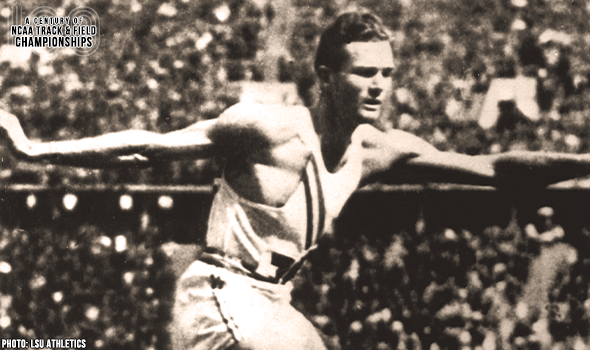
LSU’s Hardin Completed Unique 440-220H Double Twice
Glenn Hardin of LSU had a debut never seen before at the 1933 NCAA Outdoor Track & Field Championships at Chicago’s Soldier Field.
Hardin was just a sophomore when he entered an unlikely combination of events, the 440 yards and 220-yard hurdles. Hardin owned the year’s world-leading performances in both events, and his unique background meant running both – and well – on the same day was possible.
The LSU standout owned the world record and Olympic silver medal in the 400-meter hurdles, an event that was still a few years away from being offered on the NCAA’s championship menu. He earned the WR and medal the previous summer at the Los Angeles Olympics (the gold medalist’s time wasn’t eligible then for a record because of a knocked-over hurdle).
The closest call for Hardin in the NCAA meet came in the 440, but his meet-record 47.1 was a new world-leading mark and just held off Ivan Fuqua of Indiana and Ed Ablowich of Southern California. The previous summer Fuqua and Ablowich ran the opening two legs of the gold-medal winning U.S. 4×400 relay team at the Los Angeles Olympics.
Less than an hour later, Hardin was back on the track, skimming over the 220 hurdles – 6 inches lower than the 400 intermediates – in 22.9 to match his own world-leading time. Both of Hardin’s 22.9 times were faster than the ratified world record of 23.0 at the time, but neither received official recognition.
Hardin’s team-high 20 points were important for LSU, which would end up winning the team crown by four points in an upset over USC. You might also remember that Matt Gordy notched a walk-off victory in the pole vault to give the Tigers the decisive margin.
The 1934 season saw more of the same uniqueness from Hardin, except that the man known as “Slats” was even faster (He gained the nickname in high school because he was so tall and thin, like the slats for a bed).
Though Fuqua gained an early-season victory on Hardin’s home track in a dual meet, Hardin came through with another NCAA meet record as the meet moved away from Chicago for the first time. Running again at the Los Angeles Memorial Coliseum, Hardin won the 440 in 47.0, and no one was close in the 220 hurdles as he lowered the world best to 22.7 (again unratified).
Hardin proved most formidable in the 400-meter hurdles during the summer of 1934, lowering his world record to 50.6, a mark that would stand for 19 years.
His collegiate career ended in 1935 after another remarkable effort at the NCAA Outdoor Championships, but this time he found his match in each event. Hardin finished third in the 440 (UCLA’s Jimmy LuValle won) and runner-up in the 220 hurdles to Jesse Owens of Ohio State.
As a post-collegian in 1936, Hardin won Olympic gold in the 400 hurdles in Berlin. By 1964, the 400H was regularly on the NCAA schedule and his son Billy won the title for LSU, completing the meet’s first father-son combination of NCAA champions. Billy’s time, a meet-record 50.2, gave him the family best.
The NCAA and collegiate track & field will mark a momentous milestone in the spring of 2021 -- the 100th anniversary of the NCAA Championships and with that, the NCAA Track & Field Championships. In June 1921, the University of Chicago hosted the first track & field championships in NCAA history.
This point can’t be emphasized enough: Not only was the event the first for NCAA track & field, but the first championships for any sport under the sponsorship of the NCAA.
To celebrate, over each of the next 365 days, the U.S. Track & Field and Cross Country Coaches Association (USTFCCCA) will celebrate moments, student-athletes, and coaches that have made a century’s worth of championships special. From humble beginnings to important historical milestones to the modern-day, collegiate track & field has evolved with the American society.
The 2021 edition of the NCAA Division I Outdoor Track & Field Championships begin with preliminary round action on May 27-29 in Jacksonville, Fla., and College Station, Texas. The championships final site and culmination of the celebration is slated for June 9-12, 2021 at the newly rebuilt Hayward Field in Eugene, Ore.
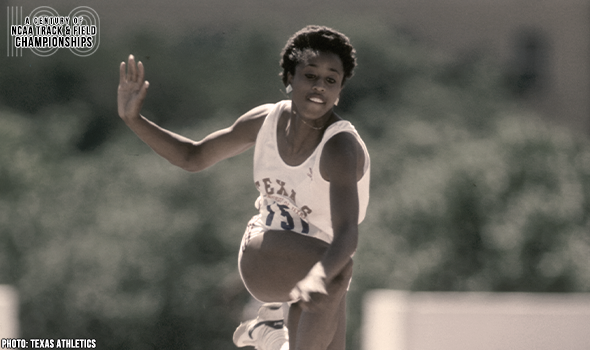
Texas’ Turner Soared To Triple Jump Greatness
Terri Turner was a two-time TJ champion at the NCAA DI Outdoor T&F Championships. When Turner won her 2nd title in 1986, she set an all-time world best of 13.66m (44-9¾).
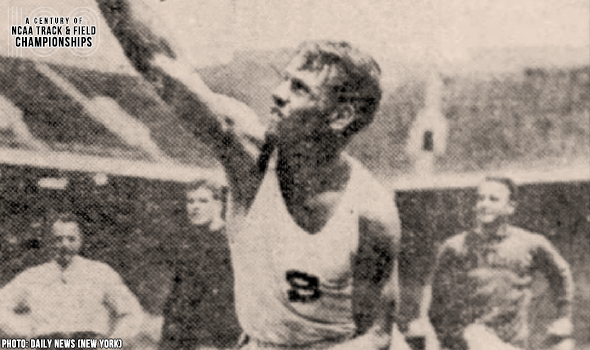
Stanford’s Rothert Starred In The Shot Put
Harlow Rothert won three consecutive shot put titles at the NCAA Outdoor T&F Championships between 1928 & 1930. He set meet records in both 1929 and 1930.

Indiana’s Kharun Set Javelin MR In 2003
Irina Kharun won the javelin title at the 2003 NCAA DI Outdoor T&F Championships with a meet record heave of 61.82m (202-10). It also helped her win by more than 30 feet!
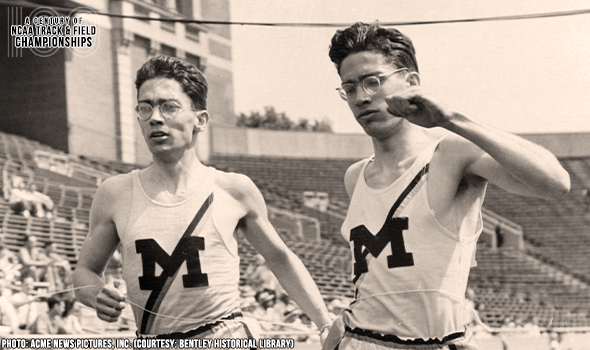
Hume Brothers Had Officials Seeing Double
Twins Robert & Ross Hume purposefully tied for the mile crown at the 1944 NCAA Outdoor Track & Field Championships. They tried again in 1945, but officials gave Ross the win.
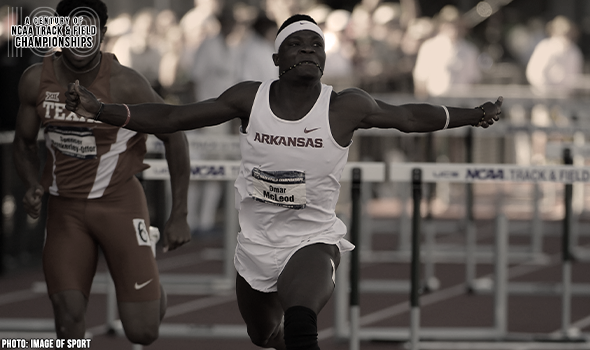
Woo Pig Sooie! McLeod Sizzled Track In 2015!
Omar McLeod clocked a sizzling 13.01 (+3.9) to win the 110HH at the 2015 NCAA DI Outdoor T&F Championships. Only one man had ever gone faster in meet history at the time.

Felicien Starred In The 100H At NCAAs
Perdita Felicien won back-to-back 100H titles at the NCAA Division I Outdoor T&F Championships in 2002 & 2003. She set a MR of 12.68 in the semifinals on the way to title No. 2.

Truly “Unbroken,” Zamperini Shined At NCAAs
Louis Zamperini set a meet record in the mile of 4:08.3 at the 1938 NCAA Outdoor T&F Championships. Zamperini, who also won the mile in 1939, saw his record last 15 years.
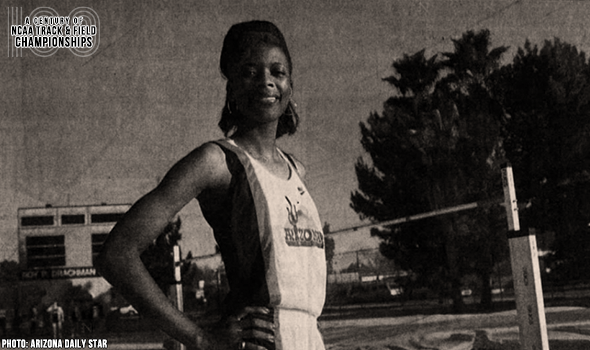
Hughes Soared To Three Consecutive HJ Titles
Tanya Hughes was the first woman to win three high jump titles at the NCAA Division I Outdoor T&F Championships. Hughes did so consecutively in 1991, 1992 & 1993.
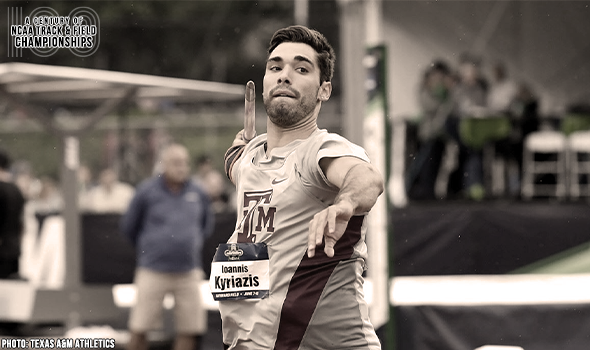
Kyriazis Made Point With Javelin In 2017
Ioannis Kyriazis set a meet record in the javelin of 82.58m (270-11) and won by more than 19 feet at the 2017 NCAA DI Outdoor T&F Championships.
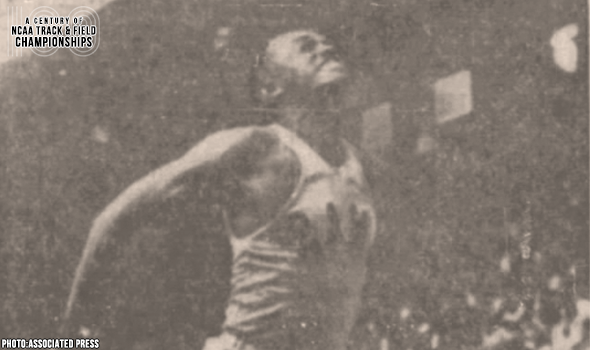
Sharpe Bounded To Meet History In 1956
Bill Sharpe became the first man to eclipse the 50-foot barrier in the triple jump at the NCAA DI Outdoor T&F Championships in 1956. Sharpe won with his 15.36m (50‑4¾) effort.

